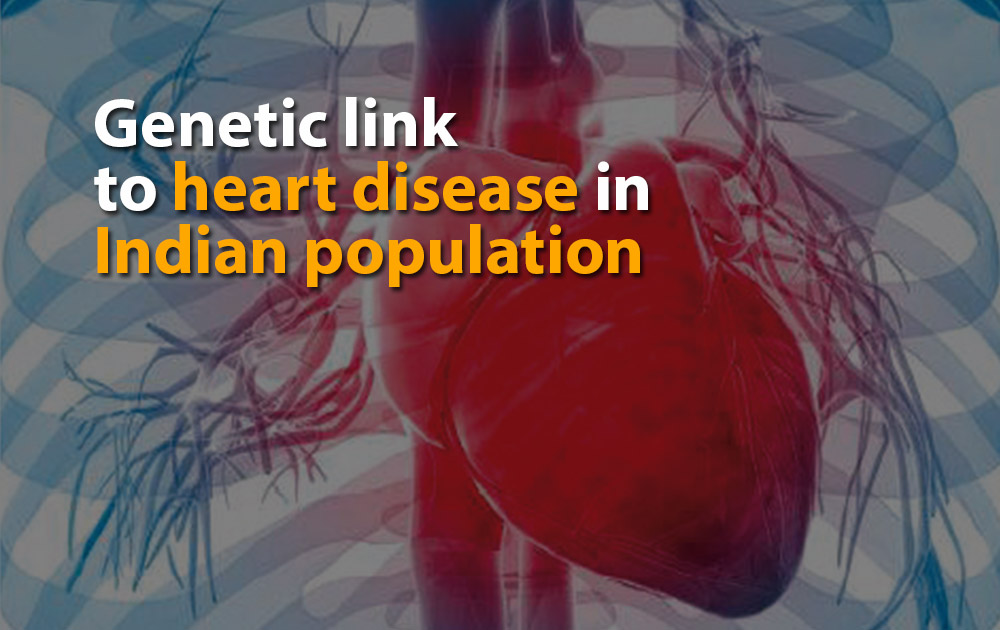A team of Indian researchers have discovered that carriers of a set of genetic variants in the Chromogranin A (CHGA) gene called‘CHGA promoter haplotype2’ may be at higher risk for cardiovascular and metabolic disorders. An estimated 35 to 40 percent of Indian population may carry this genetic variant.
The study is based on analysis of genomic DNA samples from over 750 individuals from Indian population. The research findings have been published in the Journal of Biological Chemistry.
Though the CHGA promoter haplotypeis present in other ethnic populations, it occurs more frequently in population of South Asian ancestry. “It is a protein of neuroendocrine origin and is secreted along with hormones like catecholamines. Earlier studies had suggest edits role in regulation of cardiovascular and metabolic diseases but there was no data aboutit in South Asian population,” said Lakshmi Subramanian, first author of this paper.
“Westudied genomic DNA of Indians and discovered a specific set of changes in the CHGA genesequence called Haplotype2 which contributed to increased CHGA gene expression, and ultimately increased CHGA protein levels in plasma. When the clinical parameters of those in the study were compared, Haplotype2 carriers displayed higher levels of metabolic and cardiovascular traits like plasma glucose, blood pressure and body mass index,” explained Dr. Nitish R. Mahapatra, Professor at IIT Madras.
However, he said, these results need further validation in animal models as well as large scale studies in individuals with metabolic syndrome. “We hope these findings would help unravel biological pathways and mechanisms underlying these complex diseases and would help in the development of therapeutic as well as preventive strategies,” said Dr. Mahapatra.
“Basic research in cardiovascular biology is in a very nascent stage in India with only a handful of researchers working in this field. This new study significantly contributes towards understanding molecular basis of cardiovascular and metabolic diseases. This is a fast emerging area with tremendous therapeutic and diagnostic potential,” commented Dr Shyamal K. Goswami, a professor at School of Life Science, JNU, who is not connected with the study.
The study was led by Dr. Mahapatra in a collaborative effort with Dr. Ajit S. Mullasari at Madras Medical Mission, Chennaiand Dr. Madhu Khullar at PGIMER, Chandigarh.
(Article shared from India Science Wire)
Want to write for InnoHEALTH? send us your article at magazine@innovatiocuris.com
Read all the issues of InnoHEALTH magazine:
InnoHEALTH Volume 1 Issue 1 (July to September 2016) – https://goo.gl/iWAwN2
InnoHEALTH Volume 1 Issue 2 (October to December 2016) – https://goo.gl/4GGMJz
InnoHEALTH Volume 2 Issue 1 (January to March 2017) – https://goo.gl/DEyKnw
InnoHEALTH Volume 2 Issue 2 (April to June 2017) – https://goo.gl/Nv3eev
InnoHEALTH Volume 2 Issue 3 (July to September 2017) – https://goo.gl/MCVjd6
InnoHEALTH Volume 2 Issue 4 (October to December 2017) – http://amzn.to/2B2UMLw
InnoHEALTH Volume 3 Issue 1 (January to March 2018) – https://goo.gl/fksdQx
InnoHEALTH Volume 3 Issue 2 (April to June 2018) – https://goo.gl/grbtRo
Connect with InnovatioCuris on:
Facebook: https://www.facebook.com/innovatiocuris
Twitter: https://twitter.com/innovatiocuris
LinkedIn: https://www.linkedin.com/groups/7043791
Stay updated about IC, visit: www.innovatiocuris.com

